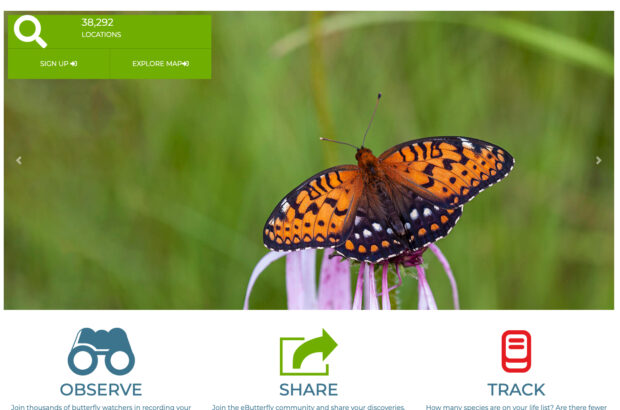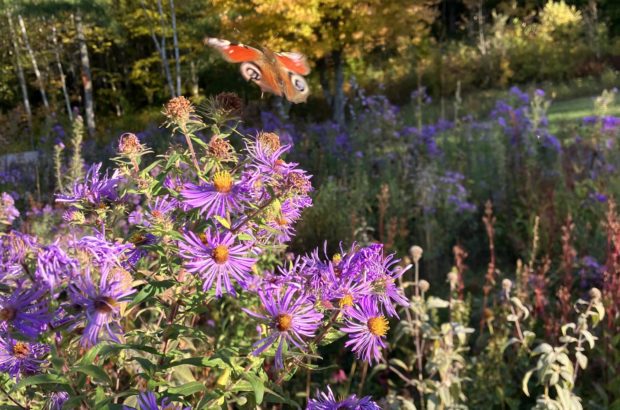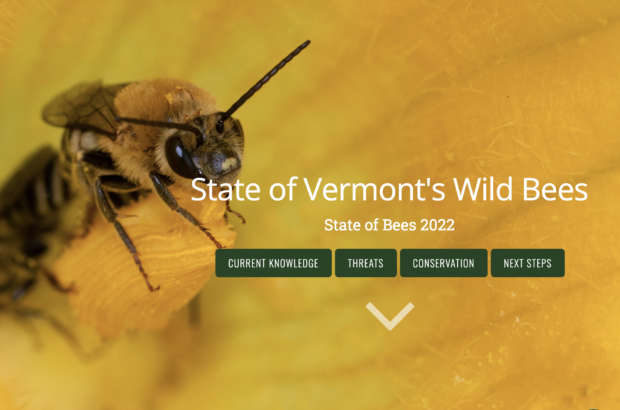Newsfeed

e-Butterfly Goes Global
Thanks to the collaboration of an international team of biologists, entomologists, and computer systems specialists, the e-Butterfly.org platform now offers high-performance tools allowing citizens everywhere to help inventory butterflies around the world.

After Two Decades of Searching a Rare Butterfly is Discovered during the Vermont Butterfly Atlas
A rare and elusive butterfly has been discovered for the first time in Vermont, flying this spring at one of the state’s protected natural areas. Bog Elfin, patterned in brown and rust, and no bigger than a penny, had eluded detection in the state until one flew past a Vermont field biologist who had been searching for it for two decades.

Vermonters Invited to Help Search for Butterflies
Vermonters now have another excuse to get outside on sunny days: to join a statewide survey of the most angelic insects—butterflies. VAL is recruiting volunteers to help search fields and fens, mountains and meadows, and even their own backyards to help document the status of Vermont’s butterflies.

Vermont Birders Rally During 12th Annual eBird County Quest
With another banner birding year in the books, it’s time to look back on all that Vermont birders have accomplished in 2022. From the Northeast Kingdom to the Massachusetts border, from the Connecticut River valley to the Champlain valley, Vermont’s vast birding community once again took part in the Vermont eBird County Quest. In its 12th year, this event continued to bolster Vermont’s enormous database of bird sightings all in the spirit of friendly competition.

New Vermont ‘Bee Team’ to Tackle Pollinator Threats
A new Vermont Pollinator Working Group will protect bees and other pollinators by targeting harmful pesticide use, while helping Vermont farmers to get to know the pollinators buzzing around their crops.

iNaturalists Helped the Vermont Atlas of Life Build Biodiversity Big Data in 2022
In 2022 thousands of iNaturalists added over 202,000 biodiversity records to the rapidly growing database of life in Vermont. Read about all the discoveries and more.

New Butterfly Species Recorded for Vermont on iNaturalist
In October iNaturalist user James McNamara photographed a European Peacock Butterfly in a garden and reported it the Vermont Atlas of Life on iNaturalist marking the first state record for this species.

VAL Awarded SciSTARTer Boost Prize
Last week, Kent McFarland, director of VAL, was recognized on behalf of the team’s work with a 2022 SciSTARter Boost Award. Ten individuals received this inaugural award for their outstanding work with community science.

Alpine Plant Believed Locally Extinct in Vermont Since 1908 Rediscovered
The Vermont Fish and Wildlife Department announced on Tuesday that the purple crowberry (Empetrum atropurpureum), a diminutive alpine shrub last documented in Vermont in 1908, has been rediscovered on Mt. Mansfield.

State of Vermont’s Wild Bees Report Assesses Conservation Status for First Time
Over 350 wild bee species call Vermont home, but 55 of those species urgently need conservation action. A new report from the Vermont Center for Ecostudies (VCE), in collaboration with the Vermont Fish & Wildlife Department (VFWD), provides the first comprehensive assessment of Vermont’s bees.

Community Scientist Discovers New Butterfly Species for Vermont
Terri Armata, one of Vermont’s most ardent butterfly watchers, has done it again. For the second year in a row she has recorded a new butterfly species for Vermont. On June 30th in the far southwest corner of Vermont she photographed a Northern Oak Hairstreak (Satyrium favonius ontario).

Summer Bee Update: Four Years in, the Flood of New Species is Becoming a Trickle
Year four of the Vermont Wild Bee Survey is winding down, but not before adding at least three new species to the state checklist. Additional species certainly await discovery, but the number of new ones found each is steadily declining, suggesting we’ve located the vast majority of the species present.






